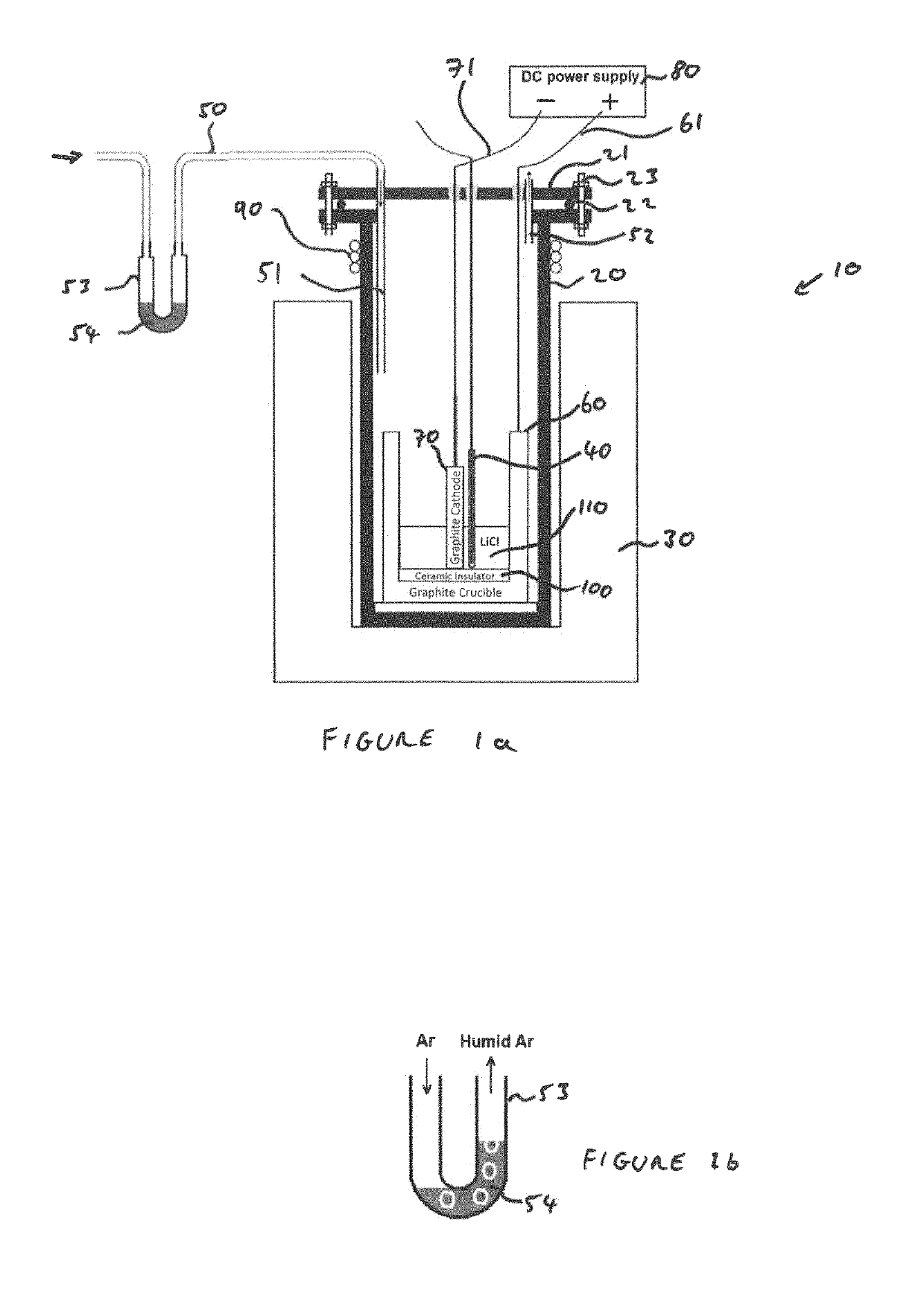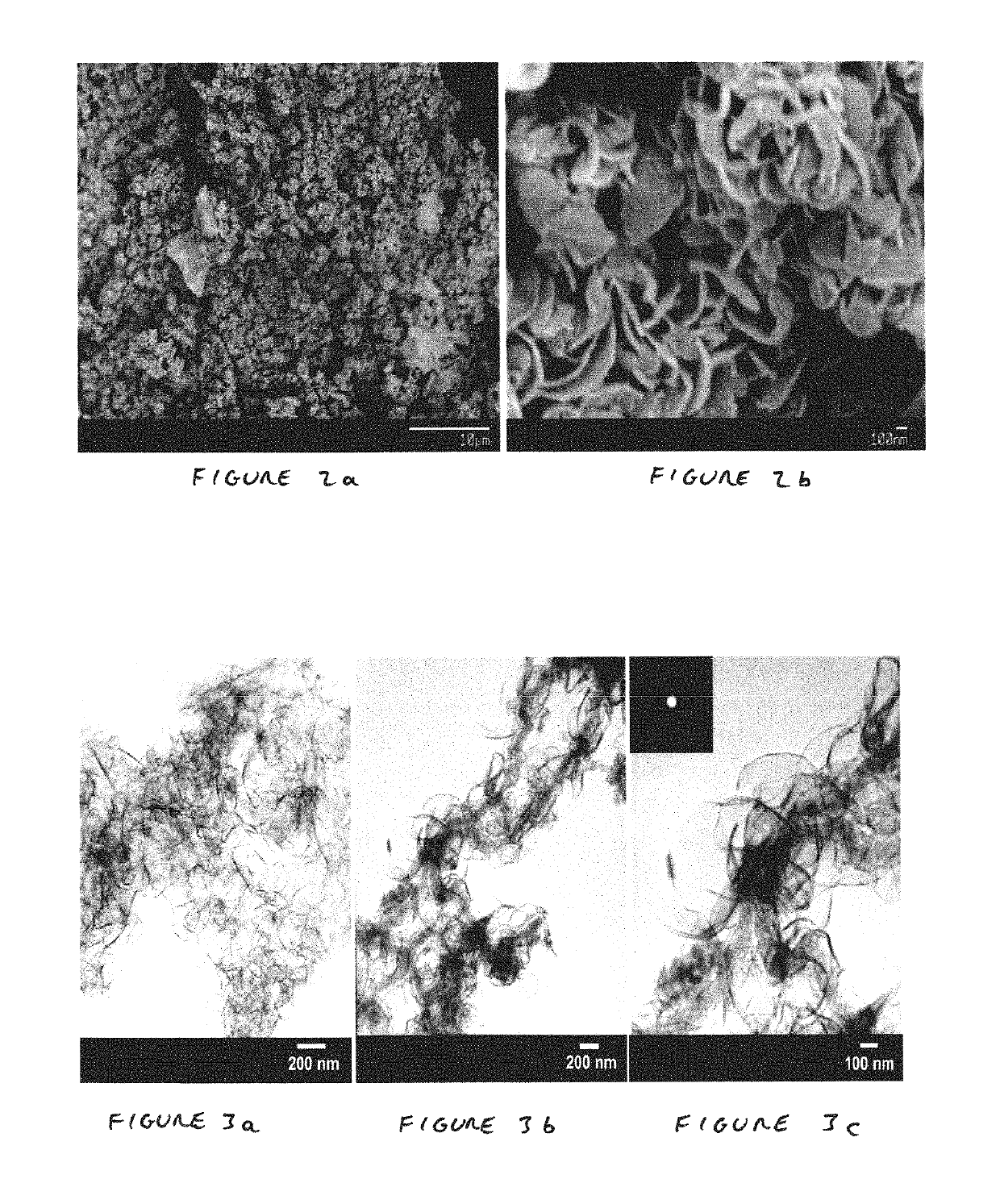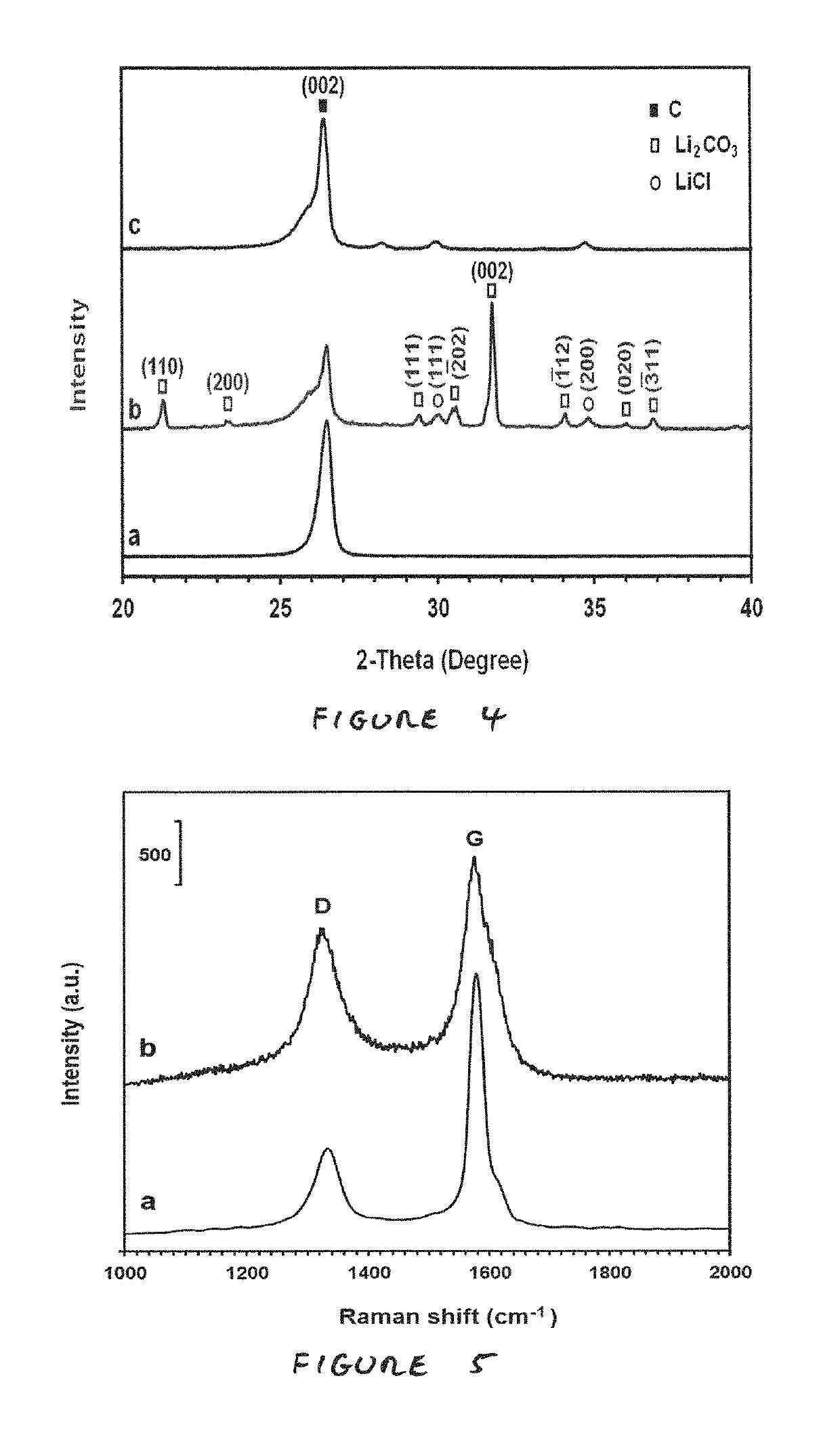Method of producing graphene
a graphene and graphene technology, applied in the field of carbon nanostructures, can solve the problems of low production rate of cvd-based synthesis methods for graphene sheets, labour-intensive preparations, and complex equipment, and achieve the effects of preventing the generation of oxidation defects, high exfoliation rate, and high exfoliation ra
- Summary
- Abstract
- Description
- Claims
- Application Information
AI Technical Summary
Benefits of technology
Problems solved by technology
Method used
Image
Examples
Embodiment Construction
[0070]Specific embodiments of the invention according to one or more aspect disclosed above will now be described with reference to the figures, in which;
[0071]FIG. 1a is a schematic illustration of an apparatus for electrochemical erosion of a graphite electrode to produce a carbonaceous powder;
[0072]FIG. 1b is a close up of a portion of the apparatus of FIG. 1 illustrating how moist gas is produced;
[0073]FIGS. 2a and 2b are scanning electron microscopy (SEM) micrographs of the carbonaceous powder formed by electrochemical erosion of a graphite electrode, showing a structure of predominantly carbon flakes and carbon plates, FIG. 2a is at low magnification and shows clumps of graphene sheets, FIG. 2b is at much higher magnification shows the clumps are made up of segments of graphene sheets;
[0074]FIGS. 3a, 3b and 3c are transmission electron microscopy (TEM) micrographs showing graphene sheets produced as a result of thermally treating a carbonaceous powder formed by electrochemical...
PUM
| Property | Measurement | Unit |
|---|---|---|
| temperature | aaaaa | aaaaa |
| temperature | aaaaa | aaaaa |
| temperature | aaaaa | aaaaa |
Abstract
Description
Claims
Application Information
 Login to View More
Login to View More - R&D
- Intellectual Property
- Life Sciences
- Materials
- Tech Scout
- Unparalleled Data Quality
- Higher Quality Content
- 60% Fewer Hallucinations
Browse by: Latest US Patents, China's latest patents, Technical Efficacy Thesaurus, Application Domain, Technology Topic, Popular Technical Reports.
© 2025 PatSnap. All rights reserved.Legal|Privacy policy|Modern Slavery Act Transparency Statement|Sitemap|About US| Contact US: help@patsnap.com



